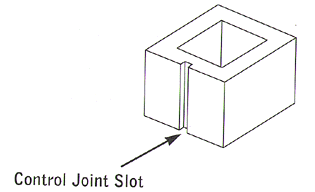
concrete masonry units (CMU)

Concrete block is made up of portland cement, fine aggregate, and water and molded into varying shapes. The common size unit is 8″ x 16″ nominal (7-5/8″ x 15-5/8″ actual making 8×16″ with the mortar joint) and weighs approximately 49lbs each. Thicknesses available are typically 3, 4, 6, 8, 10, and 12″ nominal. Concrete block has a compressive strength between 600 and 1500psi, depending on the grade. From an estimating standpoint, a 100 square foot wall will require 112.5/ea – 8 x 16″ units. For a 3/8″ joint, each block will require 0.27 cubic feet of mortar. Normal weight block is made from concrete that weighs 3,375lbs per cubic yard. Lightweight block is made from concrete weighing 2,835lb per cubic yard which is commonly mixed with vermiculate, slag, and pumice as opposed to sand, gravel, and crushed limestone. CMU’s (Concrete Masonry Unit’s) are graded based on their load bearing capability, above/below ground capability, and compressive strength.

Common Masonry Tools
Grade N units are load-bearing, above or below grade, can be exposed to moisture, and have a compressive strength between 800-1500psi.
Grade S units are loadbearing, meant for use above grade on exterior walls with weather protective coatings or walls not exposed to weather, and have a compressive strength of 600 to 1000psi.
CMU units are also grouped by ‘Type’ based on their manufactured moisture content which is adjusted based on drying shrinkage cracking.
Type I is meant to minimize drying shrinkage cracking whereas type II is not manufactured to a projected limited moisture content.



The sized and styles of blocks are as follows:

Stretcher Blocks – 2 or 3 cores and nominal dimensions of 8 x 8 x 16 with widths of 4″, 6″, 10″, and 12″ also available.
Bullnose blocks – One or more rounded exterior corners


Corner Blocks – solid end face for use in constructing the corner or end of a wall
Corner Return Blocks – used at corners of 6″, 10″, and 12″ walls to maintain horizontal coursing, with a half-course return ‘wrap’ to the design
Corner Return Blocks – used at corners of 6″, 10″, and 12″ walls to maintain horizontal coursing, with a half-course return ‘wrap’ to the design


Sill Blocks – Angled to shed rainwater from a sill
Control Joint Blocks – Used in constructing a vertical control joint in a wall

Bond Beam Blocks – Have a depressed section where reinforcing steel and grout is placed


Split Face Blocks – Split lengthwise after curing by a machine to make a rough, fractured face surface texture




Faced Blocks – Special ceramic, glazed, or polished face
Screen Blocks – have a decorative pattern of openings to permit air flow and limit sunlight

